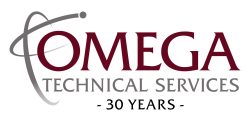
About Omega
Omega is committed to retaining critical knowledge needed to make nuclear deterrence capable for future generations, not just filling an immediate staffing need. This thought process outlines how we do technical and professional project support and consultancy services. By valuing the entire career life cycle of an employee, Omega is able to recruit talent in all stages of life – both the veteran employee that wants to leave a lasting legacy of their expertise and the one just starting their career to become a nuclear Subject Matter Expert (SME) – and everything in between. Omega fosters a safe learning environment for employees to gain and improve their working knowledge needed to support all organizations responsible for maintaining and sustaining the strategic deterrent.
This is the Omega Way.
Purpose
We ensure mission success of our national security clients.
Vision
We are the recognized leaders of work integration across the DOE and NNSA.
Values
We act with Integrity and are honest in all interactions.
We treat each other’s interests as our own to build Trust.
We maintain Transparency and don’t have hidden agendas.
We foster Teamwork by recognizing we all have different roles, but the same goals.
We focus on Relationships and value the uniqueness of everyone we interact with.
Priorities
Nation. Employee. Customer. Company.
We make decisions that benefit the greater good, support our employees, exceed customer expectations, and ensure Omega’s long-term prosperity. These priorities guide us in balancing challenges and achieving shared success.
Learn More About Omega Career Opportunities:
